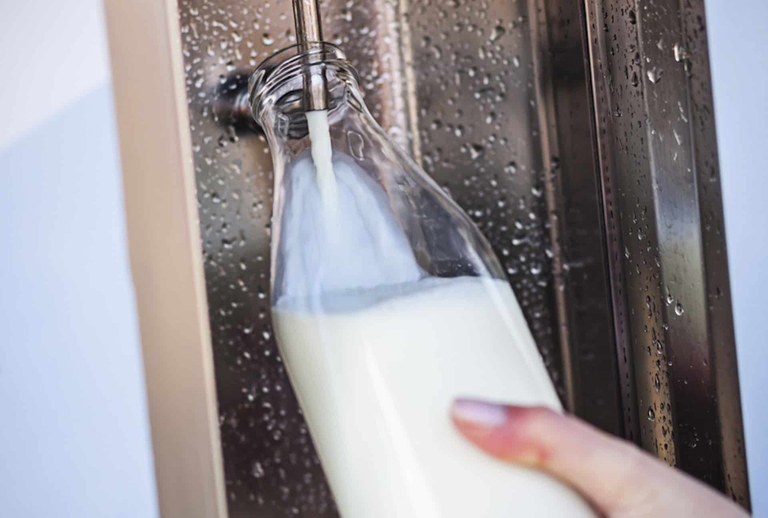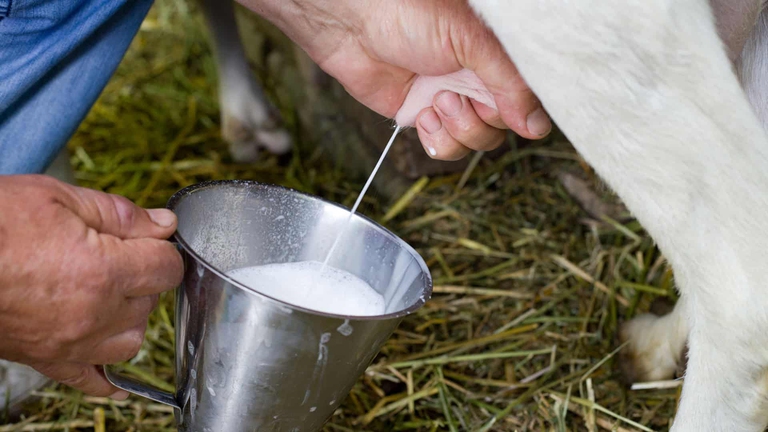https://www.lifegate.it/latte-crudo-formaggi-caratteristiche-nutrizionali-rischi
- |
- Raw milk means milk milked and marketed or used to produce cheese without being heat treated.
- The heat treatment eliminates potential bacteria harmful to health, but also some nutritional and organoleptic characteristics.
- We talked about it with Gianpaolo Gaiarin, Slow Food dairy technician.
The raw milk it is milk that by definition It has not been heat treated.This is a controversial food product, as well as i raw milk cheeses that are obtained, because on the one hand raw milk maintains some nutritional elements And taste characteristics which would be lost with heat treatment, on the other hand it can also contain harmful bacteria for human health.

What is meant by raw milk, the definition
Specifically, European legislation defines raw milk as "that produced by the secretion of the mammary gland of farmed animals (cows, goats, sheep and others) which it has not been heated above 40°C or subjected to any treatment having an equivalent effect", and which therefore does not undergo the pasteurization process.It is therefore the milk that comes milked, Therefore refrigerated and marketed or worked for the production of cheese.
Raw milk, organoleptic and nutritional characteristics
“Unlike pasteurized milk, therefore heat treated, raw milk has valuable characteristics in terms of the organoleptic aspect,” he explains Giampaolo Gaiarin, dairy technician from Slow Food.“In its flavour, we find notes of flavor associated with the grass that the cows were fed in a specific area.Raw milk is also valuable from a nutritional point of view as it retains a higher omega 3 content than pasteurized milk, as well as greater quantities of good bacteria, enzymes and vitamins".
Then there is the aspect to consider sustainability:“Pasteurized milk is produced to be transferred in space and time, therefore transported far away and stored for longer, while raw milk remains tied to the mountain pasture territory, at most it can travel for 1-2 hours by road.Furthermore, to produce pasteurized milk, which must be brought from the refrigeration temperature to 72°C and then cooled again, there is a large waste of energy and water".
The risks of raw milk
It is also true that heat treatment serves to eliminate some from the milk bacteria that they can be dangerous for the human organism, particularly in weaker subjects such as infants, children, pregnant women, the elderly and immunosuppressed people. Because of this, in the opinion of EFSA, raw milk, not undergoing heat treatments, can be a source of harmful bacteria, mainly Campylobacter, Salmonella and Escherichia coli.
For seven years, Giovanni Battista Maestri, father of a child left in a coma after developing the seu – hemolytic-uremic syndrome, after eating a raw milk cheese contaminated by Escherichia coli in Trentino, carries out a battle to demand that the laws on raw milk be changed, for example by banning the consumption of this product and raw milk cheeses by children.

“If the raw milk is contaminated, in the best case scenario you risk a stomach ache, in the worst cases, which are the rarest, the consequences can be very serious.The premise I always make,” explains Gaiarin, “is that raw milk is not simply unpasteurized milk.The attention and professionalism of the raw milk producer must necessarily be higher than that of a producer of milk intended for industry.Hygiene protocols must be followed scrupulously from cleaning the animals at the milking plant to storage."
In fact, the bacteria are not present in the milk as it is produced by the mammary glands (except in cases where there are infections in the animal), but they can contaminate it during milking or storage for example with contact with the skin of the udder, the hands of the operators and the tanks:for this reason, farms that produce raw milk must comply with correct hygiene practices aimed at minimizing the risk.

How to consume raw milk
“Since raw milk stimulates the immune system,” continues Gaiarin, “it is appropriate for it to be consumed by healthy people.It's better to give small children a tasty mature cheese." For minimize risks related to the consumption of raw milk, in addition to correct practices and controls in production, it is necessary to maintain the cold chain during transport and home storage e consume milk after boiling as the wording indicates that it must be obligatorily reported on the label of raw milk according to Italian legislation. The consumption of milk and raw milk cheeses remains at its own discretion, always in the awareness of benefits and risks.
